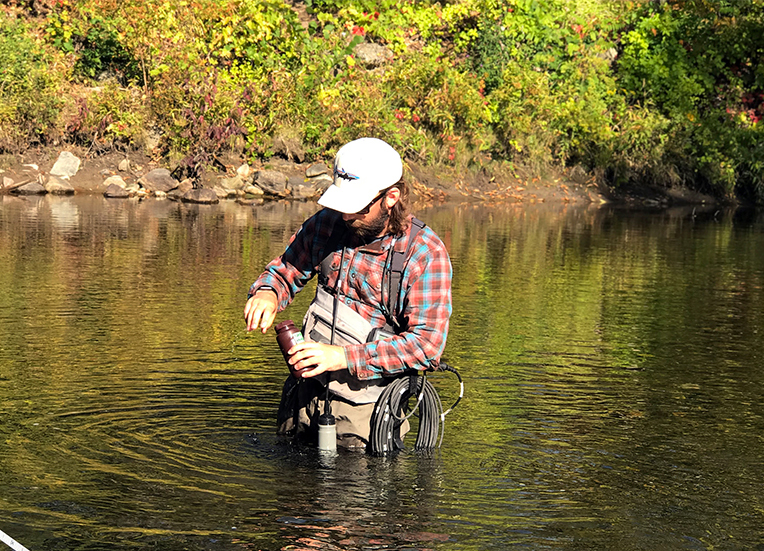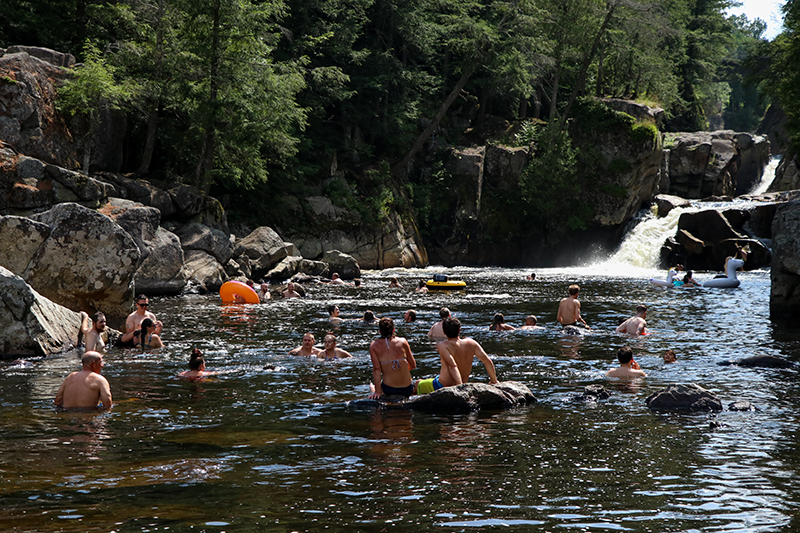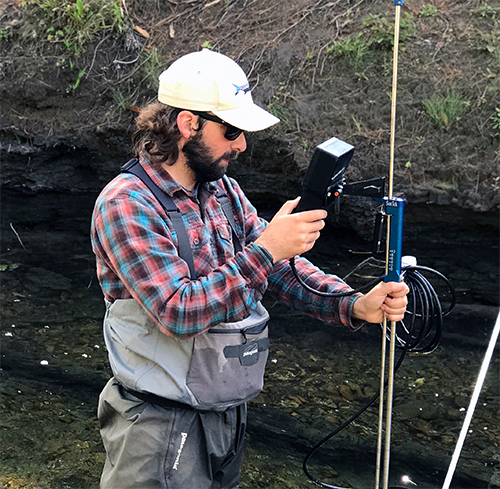
What's in Our Backcountry Waters?
By: Guest Author, Brendan Wiltse - Science & Stewardship Director for the Ausable River Association
November 5, 2019
Despite the High Peaks Wilderness being the headwaters of many prominent rivers in New York State, including the Hudson, Ausable and Raquette, we know only a little about the quality of the water found there. The Adirondack Lake Survey Corporation monitors several waterbodies in the High Peaks for chemical changes related to recovery from acid rain, and the New York State Department of Environmental Conservation (DEC) does occasional sampling of fish. Beyond those efforts we know little about how these wild streams and lakes are changing in response to a warming climate, invasive species, increased visitor use, and other stressors.

As the Science & Stewardship Director for the Ausable River Association (AsRA), I am constantly thinking of ways we can use science to inform and assess our program work. When I started with the organization in 2014, one of my first tasks was to coordinate the roll out of our Porta-John Program. We place portable toilets along the West and East Branch Ausable River so that river users, cyclists and tourists have a place to go to the bathroom. Anecdotally, the program has been successful in limiting the amount of toilet paper and unburied human waste found along the river.
Keeping human waste out of Adirondack waters
With increases in visitor use along the Route 73 corridor, it became apparent that the model we had built to address these issues along the river could be beneficial to the High Peaks Region. In 2016, in coordination with the NYS DEC we expanded the program to the Cascade Trailhead, Roaring Brook Trailhead, Chapel Pond, and Giant Ridge Trailhead. That year our portable toilets collected over 10,000 gallons of human waste.

There is ample scientific evidence to back up the concern of improperly disposed of human waste. Runoff can contaminate waterways, it can spread to disease to other animals, and flying insects can transmit disease to humans if they come into contact with food or water. There are also the negative aspects related to visitor experience, no one wants to see toilet paper or poop when out on the trail.
In 2017, we began thinking more closely about the potential water quality impacts. Surprisingly, there is little or no data collected about the quality of water in the High Peaks Region related to safety for drinking or recreational contact. The Hudson Riverkeeper once collected data along the headwaters of the Hudson, but little has been done beyond that.
Study launched to look for fecal indicator bacterial in High Peaks waters
AsRA decided to launch a pilot program to look at E. coli, a fecal indicator bacteria, at sites in the High Peaks. We tested 10 sites along a gradient of human use, ranging from drainages that have no trails to sites like Indian Falls, Marcy Dam and Cascade Brook that have high trail density.

We didn’t have enough samples to develop statistically significant conclusions, but we did learn a few important things.
3 Interesting findings
- First, out of the total of 17 samples that were processed, all but one had detectable amounts of E. coli. This is important because the New York State Department of Health considers any E. coli in a potable water source unsafe to drink. The presence of E. coli doesn’t mean there is necessarily a human pathogen, but it does mean there is higher likelihood of one. Water treatment options are cheap and lightweight and there is little reason not to mitigate the risk of contracting a waterborne pathogen from a backcountry stream by treating your water.
- Second, the locations receiving runoff from trails had higher concentrations of E. coli, and those with the highest trail density were consistently the highest.
- Third, none of the sites approached or exceeded the threshold for concerns related to recreational contact, i.e. swimming.

A much more in-depth study of the impact of recreational use on water quality in the High Peaks Wilderness is needed. The results would be informative both from an ecological perspective and a human health perspective. E. coli is an easy indicator for the potential presence of human pathogens, but it would be much more informative to look at pathogens directly, such as Giardia and Cryptosporidium. With the pilot project under our belt, we’ve worked out the logistics of retrieving samples from remote locations with a coordinated group of volunteers. In addition, we are exploring the potential to use environmental-DNA to detect the presence of these pathogens.
As we grapple with challenging natural resource management problems, the Ausable River Association believes that looking to data and the latest scientific research to inform management actions is critical. We recommend an early detection monitoring program for the High Peaks; one that is capable of identifying resource impacts so that changes in management can be identified and implemented quickly.

Brendan Wiltse is the Science & Stewardship Director for the Ausable River Association. He holds a Ph.D. in limnology from Queen's University. His research focuses on road salt pollution, climate change and brook trout conservation.




